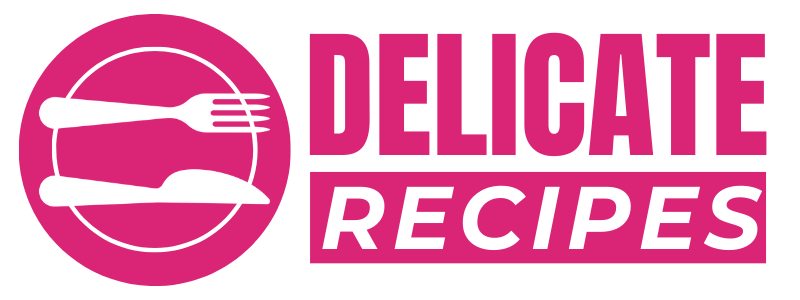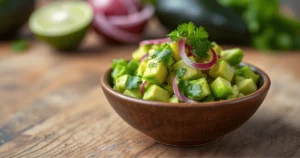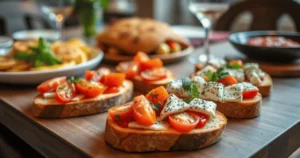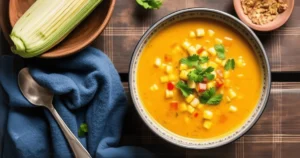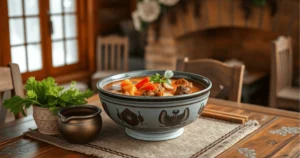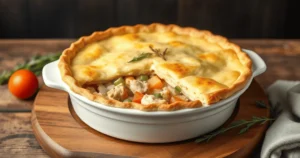Enjoy the rich flavors of a perfectly cooked lamb loin roast, made just for you. This guide has recipes for every diet, from classic to paleo. You’ll learn how to make a lamb loin roast that’s both healthy and tasty.
Discover a wide range of lamb loin roast recipes, from traditional to Mediterranean and low-carb. Learn how to pick the best lamb cuts and how to store and prepare the meat. You’ll also get tips on seasoning, marinating, and cooking times to make your dish perfect.
Whether it’s for a special event or a simple dinner, this guide has you covered. You’ll learn how to make a lamb loin roast that’s both delicious and fits your diet.
Understanding the Perfect Lamb Loin Roast
Learning to cook starts with knowing how to pick and prepare the perfect lamb loin roast. This guide will teach you how to choose the best cuts and store them right. You’ll learn to enjoy the rich flavors and tender texture of this meat.
Selecting Quality Lamb Cuts
For a great lamb loin roast, look for cuts that are well-marbled and without blemishes. Choose lamb with a bright, pinkish-red color and a smooth texture. Stay away from dry, tough, or very fatty cuts.
Meat Grades and Quality Indicators
To get the best lamb quality, learn about the USDA meat grading system. Prime and Choice grades are the best, with more marbling and tenderness. Check the meat’s color, texture, and look to judge its quality.
Proper Storage Guidelines
Keeping your lamb loin roast fresh and flavorful is key. Store it in the coldest part of your fridge, wrapped tightly or in an airtight container. Eat it within 3-5 days for the best meat grades and quality.
| Storage Timeframe | Refrigerator (40°F or below) | Freezer (0°F or below) |
|---|---|---|
| Fresh, Uncooked | 3-5 days | 6-12 months |
| Cooked | 3-4 days | 2-3 months |
Essential Equipment for Roasting Lamb
To make a delicious lamb loin roast, you need more than just good meat. The right kitchen tools and equipment are key to great results. Let’s look at the essential items for roasting lamb.
A roasting pan is a must. Choose one made of heavy-duty, heat-conducting materials like stainless steel or enameled cast iron. A pan with a rack ensures even heat, making your lamb loin perfect.
A meat thermometer is also crucial. It lets you check the lamb’s internal temperature, ensuring it’s cooked just right. A digital thermometer with a probe is the ideal option.
- Roasting pan: Invest in a high-quality, heavy-duty pan for even heat distribution.
- Meat thermometer: A digital thermometer with a probe will help you achieve the perfect internal temperature.
- Basting tools: A brush or baster can help you keep the lamb moist and flavorful during roasting.
- Carving knife: A sharp, long-bladed knife will make slicing the roasted lamb loin a breeze.
- Cutting board: A large, sturdy cutting board will provide a stable surface for carving and serving the lamb.
Other kitchen tools can also improve your lamb roasting experience. A basting brush or baster, a sharp carving knife, and a sturdy cutting board are all helpful. With the right equipment, you’ll create a memorable lamb loin roast.
| Essential Equipment | Key Features | Importance |
|---|---|---|
| Roasting Pan | Heavy-duty, heat-conducting material | Ensures even heat distribution for optimal cooking |
| Meat Thermometer | Digital with probe for internal temperature monitoring | Helps achieve the perfect doneness |
| Basting Tools | Brush or baster | Keeps the lamb moist and flavorful during roasting |
| Carving Knife | Sharp, long-bladed | Ensures a clean, precise cut when slicing the roasted lamb |
| Cutting Board | Large and sturdy | Provides a stable surface for carving and serving the lamb |
Basic Preparation Techniques
Preparing a delicious lamb loin roast starts with the right steps. Trimming fat, seasoning, and marinating are key for great taste.
Trimming and Tying
First, remove any extra fat from the lamb loin. This ensures it cooks evenly and stays lean. Then, tie the roast with twine to keep it even.
Seasoning Methods
Seasoning is where you can get creative. Try different herbs, spices, and rubs to find your favorite. A mix of garlic, rosemary, and sea salt is a classic choice.
Marination Tips
- Marinating the loin in olive oil, lemon juice, and herbs makes it tender and flavorful.
- Let it marinate for 2-4 hours, turning it to coat evenly.
- The acid in the marinade breaks down tough tissues, making the meat juicy.
| Marinade Ingredient | Benefits |
|---|---|
| Olive Oil | Adds moisture and richness to the meat |
| Lemon Juice | Tenderizes the lamb and adds a bright, citrusy flavor |
| Fresh Herbs | Enhance the seasoning techniques and impart unique aromas |
Classic Herb-Crusted Lamb Loin Roast
Take your lamb loin roast to the next level with a classic herb crust. This recipe combines aromatic herbs, garlic, and lemon zest. It makes the outside golden and the inside juicy and tender. You can get restaurant-quality results in your kitchen with a few simple steps.
For a perfect herb crust, start with quality lamb loin and season it well. Trim excess fat and tie the roast for even cooking. Mix fresh herbs like rosemary, thyme, and parsley with garlic, lemon zest, and olive oil.
Coat the lamb loin with the herb mixture, pressing it on evenly. Make it rest about for 30 minutes at room temperature before roasting. This step helps the flavors meld and the meat cook more evenly.
Roast at 400°F, keeping an eye on the internal temperature. It should reach 135°F for medium-rare. Allow the lamb to rest about 10 to 15 minutes before slicing. This makes the meat tender and flavorful.
| Ingredient | Quantity |
|---|---|
| Lamb Loin Roast | 3-4 lbs |
| Fresh Rosemary, chopped | 2 tbsp |
| Fresh Thyme, chopped | 2 tbsp |
| Fresh Parsley, chopped | 1 tbsp |
| Garlic, minced | 3 cloves |
| Lemon Zest | 1 tsp |
| Olive Oil | 2 tbsp |
| Salt and Pepper | to taste |
This herb crust lamb loin roast is sure to wow your guests. It’s a new family favorite. Serve it with roasted vegetables or a fresh salad for a complete traditional recipe meal.
Mediterranean-Style Roasting Methods
Explore Mediterranean lamb loin roast recipes and discover Greek seasonings and cooking techniques. Learn to make authentic Mediterranean cuisine at home.
Greek-Inspired Seasonings
Mediterranean cuisine is all about aromatic spices and herbs. Add a classic Greek seasoning mix to your lamb loin roast. This mix includes:
- Dried oregano
- Garlic powder
- Lemon zest
- Coarse sea salt
- Ground black pepper
- Dried thyme
Spread this fragrant seasoning over your lamb loin roast. Let the flavors soak into the meat for a true Mediterranean taste.
Traditional Cooking Temperatures
Getting the right internal temperature is key for a perfect lamb loin roast. For a Mediterranean-style roast, aim for these temperatures:
| Desired Doneness | Internal Temperature |
|---|---|
| Medium-Rare | 130-135°F (54-57°C) |
| Medium | 140-145°F (60-63°C) |
| Medium-Well | 150-155°F (66-68°C) |
Monitor the internal temperature to ensure your lamb loin roast is cooked just right. It should be tender, juicy, and full of Mediterranean flavors.
Low-Carb Lamb Loin Preparations
If you’re on a keto-friendly or low-carb diet, lamb loin roasts are a great choice. Healthy roasting and special seasoning can bring out lamb’s rich flavors without carbs. Here are some tasty low-carb recipes and healthy roasting tips for your lamb loin roast.
Choose rubs and marinades low in sugars and carbs. Skip sweet glazes for herbs, spices, and healthy fats like olive oil. Herbs like rosemary, thyme, and garlic add flavor without carbs.
- Herb-Crusted Lamb Loin: Coat the roast in a mix of minced garlic, fresh rosemary, thyme, and olive oil.
- Mediterranean-Style Lamb: Rub the loin with oregano, lemon zest, and a bit of Dijon mustard.
- Garlic-Herb Butter Baste: Baste with a butter sauce mixed with garlic, parsley, and crushed red pepper flakes.
Choose cooking methods that highlight lamb’s natural taste. Roasting at 400°F (200°C) creates a tasty crust. Try reverse-searing for a juicy, low-carb roast.
These keto-friendly and low-carb methods make a delicious lamb loin roast. Try different seasonings and cooking ways to find your favorite low-carb recipe.
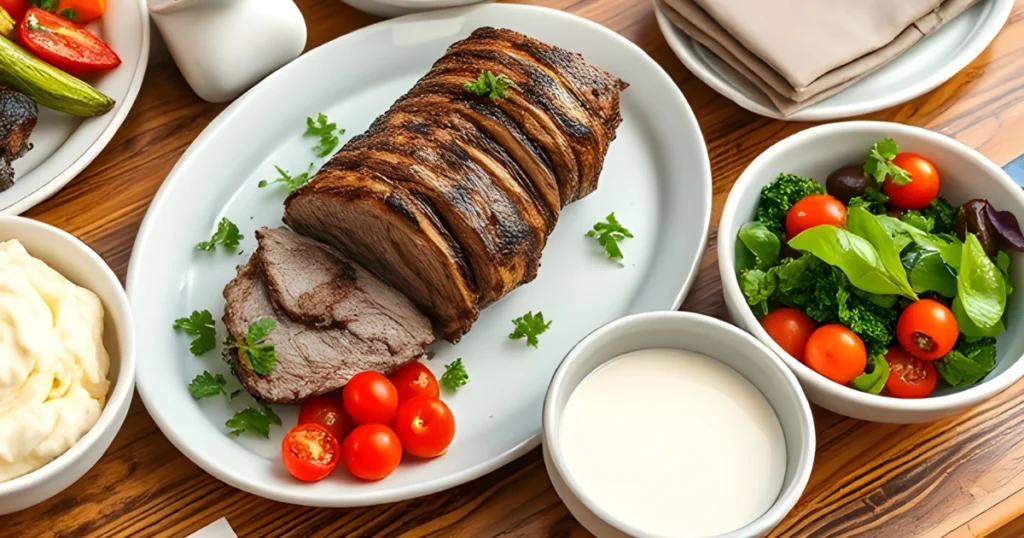
Paleo-Friendly Roasting Techniques
For those who love the paleo diet, a tasty lamb loin roast is within reach. The secret is using natural seasonings and cooking methods that fit the paleo way. By mastering these techniques, you can make a dish that’s both delicious and in line with your diet.
Natural Seasoning Options
The paleo diet focuses on whole, unprocessed foods. This includes how you season your lamb loin roast. Choose fresh herbs like rosemary, thyme, and oregano for bright flavors. Also, try aromatic spices like garlic, black pepper, and cumin to add depth to your dish.
Cooking Time Guidelines
- For a 2-3 lb lamb loin roast, aim for a cooking time of 20-25 minutes per pound when roasting at 425°F.
- Use a meat thermometer to ensure the internal temperature reaches 145°F for medium-rare or 160°F for medium doneness.
- Remember to let the roast rest for 10-15 minutes before slicing to allow the juices to redistribute, resulting in a juicy and tender final dish.
By sticking to these paleo-friendly roasting tips, you can enjoy a healthy and tasty lamb loin roast. The right seasonings and cooking times will make your meal both flavorful and paleo-friendly.
Wine Pairing Suggestions
When it comes to wine pairing for your lamb loin roast, the options are vast. The goal is to pick wines that enhance the complementary flavors of the lamb. Whether you like bold reds or crisp whites, there’s a perfect match to make your lamb roast even better.
For a classic choice, try a full-bodied red like Cabernet Sauvignon or Malbec. These wines, with their blackberry, vanilla, and oak notes, balance the lamb’s richness. Or, a Pinot Noir with its bright acidity and earthy hints can offer a nice contrast.
If you prefer something lighter, a dry white wine like Sauvignon Blanc or Chardonnay works well. Sauvignon Blanc’s citrus and herbal notes complement the lamb. A well-oaked Chardonnay adds a creamy, buttery touch to the pairing.
Exploring different wine pairings is key. Find the one that suits your taste and how you’ve prepared your lamb loin roast. With a bit of trial and error, you’ll find the perfect wine to enhance your meal.
Side Dish Combinations
When you’re cooking a tasty lamb loin roast, the right side dishes are key. They help make your meal complete and enjoyable. You can choose from colorful veggies or grain-free options to match the lamb’s rich taste.
Vegetable Accompaniments
Roasted root veggies like carrots, potatoes, and parsnips pair well with lamb. Their sweetness and softness balance out the lamb’s savory flavor. Leafy greens like Brussels sprouts or spinach add a fresh touch to your meal.
Grain-Free Sides
If you’re on a grain-free or low-carb diet, there are great side dish choices. Try cauliflower mash or zucchini noodles for a tasty, grain-free option. Roasted asparagus or grilled portobello mushrooms also highlight the lamb’s natural taste.
| Side Dish | Flavor Profile | Dietary Considerations |
|---|---|---|
| Roasted Root Vegetables | Sweet, earthy | Gluten-free, Paleo |
| Sautéed Spinach | Fresh, leafy | Gluten-free, Paleo, Vegetarian |
| Cauliflower Mash | Creamy, savory | Gluten-free, Paleo, Low-carb |
| Grilled Portobello Mushrooms | Meaty, umami | Gluten-free, Paleo, Vegetarian |
Choosing the right side dishes can make your meal both balanced and beautiful. It lets the lamb loin roast shine in all its glory.
Tips for Perfect Internal Temperature
Getting the right internal temperature is key for a delicious and juicy lamb loin. The meat thermometer is your go-to for perfect cooking doneness and food safety. Here are some tips to help you get it right every time:
- Put the meat thermometer in the thickest part of the lamb loin, avoiding bones.
- For a medium-rare, aim for 135°F (57°C). This gives a warm, pink center that’s juicy and tender.
- If you like your lamb more well-done, aim for 145°F (63°C) for medium doneness.
- Remember, the temperature will rise by about 5°F (3°C) when the lamb rests. Plan for this.
- Always use a reliable meat thermometer and double-check the reading. This ensures the lamb is cooked to the right cooking doneness for food safety.
| Doneness | Internal Temperature |
|---|---|
| Rare | 125°F (52°C) |
| Medium-Rare | 135°F (57°C) |
| Medium | 145°F (63°C) |
| Medium-Well | 150°F (66°C) |
| Well-Done | 160°F (71°C) |
By following these guidelines and using a reliable meat thermometer, you can ensure your lamb loin roast is cooked to perfection. This keeps it juicy, tender, and flavorful, while also ensuring food safety.
Resting and Serving Guidelines
Proper meat resting is key for a perfect lamb loin roast. After taking it out of the oven, let it rest for 10-15 minutes before slicing. This step lets the juices spread evenly, making the meat tender and full of flavor.
Carving Techniques
When it’s time to serve, use precise carving methods to show off the roast’s beauty. Start by slicing the lamb loin across the bone in thin, even slices. Use a sharp knife and a steady hand to get clean, uniform cuts. This keeps the meat’s texture and look intact.
Presentation Tips
- Arrange the sliced lamb loin on a warm serving platter.
- Garnish the food presentation with fresh herbs, such as rosemary or thyme, for a visually appealing touch.
- Drizzle a bit of the pan juices over the slices to enhance flavor and moisture.
- Serve the lamb loin roast alongside your favorite side dishes for a complete and delicious meal.
| Meat Resting Time | Carving Technique | Presentation Recommendations |
|---|---|---|
| 10-15 minutes | Slice perpendicular to the bone in thin, even cuts | Arrange on warm serving platter Garnish with fresh herbs Drizzle with pan juices |
Common Roasting Mistakes to Avoid
Roasting a succulent lamb loin is a rewarding experience. But even experienced chefs can make common mistakes. Avoid these to ensure your lamb loin is perfectly cooked every time.
One big mistake is overcooking the meat, making it dry and tough. Use a meat thermometer to check the internal temperature. Pull the roast from the oven before it reaches your desired doneness. Remember, the temperature will rise as it rests.
Another challenge is uneven cooking. To avoid this, rotate the roast often during cooking. Trussing the meat also helps it cook evenly.
- Prevent overcooking by using a meat thermometer
- Rotate the roast periodically for even browning
- Truss the meat to encourage uniform cooking
Flavor is key for a great lamb loin roast. Don’t under-season by using a flavorful rub or marinade. Also, watch the doneness level to keep the meat juicy and flavorful.
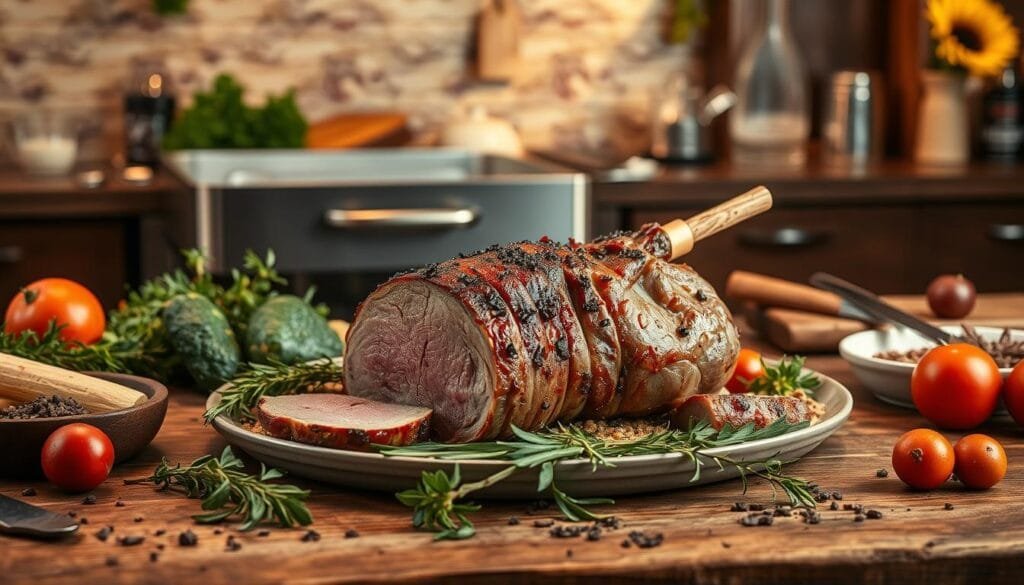
Avoid these mistakes for a perfectly cooked, juicy, and flavorful lamb loin roast. With attention to detail and the right techniques, you’ll achieve roasting success.
Conclusion
In this article, we’ve delved into the world of lamb loin roast. We’ve covered how to pick the best cuts and the key techniques for cooking. Now, you know how to make delicious lamb loin roast dishes for any taste, from classic to Mediterranean and even Paleo.
The cooking techniques we discussed will help you cook lamb loin roast perfectly. You can choose from oven roasting or try low-carb and Paleo-friendly methods. With the right temperatures, resting times, and presentation, you can serve amazing lamb loin roast at home.
Keep exploring and trying new recipe summary options. Find your favorite ways to cook this versatile meat. With what you’ve learned, you can create new flavors, be creative, and wow your loved ones with your lamb loin roast skills.
FAQ
What are the key considerations when selecting quality lamb cuts for roasting?
When picking lamb for roasting, choose cuts from the loin or leg. Look for bright, even colors and a firm texture. Avoid cuts with too much fat or blemishes. Check the USDA grade to get the best quality.
How should I properly store lamb loin before cooking?
Store lamb loin in the coldest part of your fridge. Keep it tightly wrapped or in an airtight container. It can stay refrigerated for 3-5 days or frozen for up to 9 months. Always thaw frozen lamb in the fridge before cooking.
What essential equipment do I need for roasting lamb loin?
You’ll need a sturdy roasting pan and a meat thermometer for doneness. Sharp carving knives are also important. A rack helps with even cooking, and oven mitts are for safe handling.
How should I season and prepare lamb loin for roasting?
Start by trimming excess fat and tying the loin with string. You can season it with herbs, spices, or just salt and pepper. Letting it rest at room temperature for 30 minutes before roasting can improve flavor.
What are some tips for achieving the perfect internal temperature when roasting lamb loin?
Use a meat thermometer to check the lamb’s internal temperature. Aim for 130-135°F for medium-rare. Let the roast rest for 10-15 minutes before slicing, as the temperature will rise.
How should I rest and serve a roasted lamb loin?
Let the lamb loin rest for 10-15 minutes after roasting. This makes it tender and juicy. Slice it against the grain for the best texture. Garnish with fresh herbs or pan juices for a fancy look.
What are some common mistakes to avoid when roasting lamb loin?
Avoid overcooking, which makes the lamb dry and tough. Don’t forget to let it rest before slicing. Also, choose the right cut and season it well. Use a meat thermometer and let it rest to get a perfect roast every time.
For tips on safely handling and cooking lamb, visit the USDA’s guide: Lamb: From Farm to Table.
